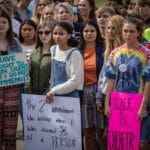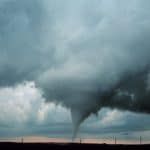Boris Yeltsin’s arms control legacy
By Pavel Podvig | April 29, 2007
Boris Yeltsin, Russia’s first president, was never a cold warrior. Although he made his Soviet career in the Urals, the traditional stronghold of military-related heavy industry, his real background was in civilian construction. He ran the Sverdlovsk (now Ekaterinburg) region in the late 1970s and early 1980s as a Communist Party boss, and although he was summoned to lead the Moscow party organization in December 1985, he hardly had an opportunity to involve himself in the details of the U.S.-Soviet nuclear superpower confrontation. Nor did he ever show any real interest in the subject, unlike other Soviet and Russian leaders who were enamored with the power that comes with possessing strategic nuclear forces.
Still, Yeltsin found himself leading a nuclear superpower after the Soviet Union collapsed in 1991. The new Russian Federation not only possessed the largest number of nuclear weapons of any of the nuclear states, but it also shared them with its three post-Soviet neighbors–Kazakhstan, Ukraine, and Belarus. Transferring control of these weapons to Moscow and consolidating the remaining nuclear weapons in Russia was a serious challenge.
Most of the credit for the orderly and safe transfer belongs to the professionals in the military who actually did the job, and to Kazakh, Ukrainian, Belarusian, and U.S. diplomats who worked out the legal side of consolidating the former Soviet nuclear arsenal. But we should not underestimate the contribution from Yeltsin and other political leaders. They allowed the professionals to do their job, which helped diffuse political tensions in the process.
From there, it seemed only natural that Russia and the United States continue the START disarmament process. Yeltsin confirmed Soviet initiatives on eliminating a range of tactical nuclear weapons and quickly moved to negotiate and sign START II, hoping that this would open new areas of U.S.-Russian cooperation. For Yeltsin, the agreement itself was more important than the details. At that time, Russia was more than willing to accommodate the U.S. administration. For its part, Washington was still entrenched in Cold-War thinking, attempting to hedge against all types of unexpected developments. Yeltsin’s early optimism would haunt him–the promises of true partnership never materialized, while START II couldn’t withstand the scrutiny of Cold-War bean counters. The U.S. pursuit of missile defense didn’t help the disarmament agenda either, as Russia and the United States got bogged down in the missile defense debate, and the disarmament momentum of the early 1990s was eventually lost.
At the same time, a number of important efforts continued: the Cooperative Threat Reduction program, lab-to-lab cooperation between nuclear weapon scientists, and conversion of uranium from Soviet nuclear weapons into fuel for U.S. nuclear power plants to name just a few. Russia also played an important role in negotiating the Comprehensive Test Ban Treaty, which it signed in 1996 and ratified in 2000, shortly after Yeltsin left office. In the end, the 1990s will be remembered for the progress that Russia and the United States made in securing nuclear weapons and materials, not for disagreements about missile defense or a line-by-line analysis of START II.
Yeltsin never seemed to subscribe to the view that nuclear weapons are important. Instead, he believed in the power of his personal relationships with people–namely his relationships with other world leaders. After he signed the NATO-Russia Founding Act in 1997, in a characteristic gesture, he famously announced to NATO leaders that Russia would no longer point its nuclear missiles at their countries. It seemed eccentric at the time, but it wasn’t illogical. Unfortunately, almost no one (and certainly not the NATO leaders) shared Yeltsin’s idealism. Over time, he grew increasingly frustrated with the failure of his personal diplomacy, and after the NATO bombing campaign in Yugoslavia in 1999, he even resorted to confrontational rhetoric, trying to remind everyone that Russia was still a nuclear power.
He resigned at the end of 1999, seeming to realize that no one else shared his idealism–at home or abroad. He turned out to be correct; his successor managed to command far greater respect by increasing military spending, taking confrontational stands on all types of issues, and making occasional threats to deploy more nuclear warheads.
But there is little that the current leaders can demonstrate as progress in nuclear disarmament or global security. During Yeltsin’s admittedly uneven tenure, they managed to do much more. This proves that he was fundamentally right: People are important, not weapons.
Together, we make the world safer.
The Bulletin elevates expert voices above the noise. But as an independent nonprofit organization, our operations depend on the support of readers like you. Help us continue to deliver quality journalism that holds leaders accountable. Your support of our work at any level is important. In return, we promise our coverage will be understandable, influential, vigilant, solution-oriented, and fair-minded. Together we can make a difference.
Topics: Columnists















